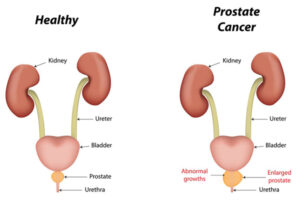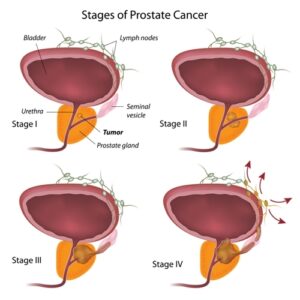We are aware that men are mostly commonly affected by illnesses such as colon and lung cancer, but another silent killer is prostrate cancer.
Most people especially men are not aware of such cancer. Well, this will educate you of the symptoms, risks, and the nature of prostate cancer.
In Malaysia, prostate cancer is the third most frequent cancer diagnosed in men. Early prostate cancers typically have no symptoms. Prostate cancer is therefore referred to be a silent killer.
What is Prostate Cancer?

Cancer that develops in the prostate is known as prostate cancer. In males, the prostate is a little walnut-shaped gland that secretes seminal fluid, which feeds and carries sperm.
In the prostate gland, where they may not do much harm, many prostate tumours develop slowly and are localised, Although some prostate cancers spread slowly and may require little to no treatment, others are aggressive and can be spread very quickly.
Risk Factors of Prostate Cancer
Age
Men over 65 years old account for 60% of cases of prostate cancer.
Family factor
Men who have a first-degree relative with the disease who was diagnosed earlier in life, such as a father or brother.
Genetic factor
Family members with the BRCA2 gene mutation have higher risk on prostate cancer or breast cancer for female; breast or ovarian cancer).
Lifestyle factor
Men heavy on red meat and fatty foods but light on fruits and vegetables, which correlate with obesity.
Symptoms of Prostate Cancer

Symptoms of early-stage prostate cancer linked to prostate gland enlargement may include;
- urinating frequently
- having trouble initiating or stopping the pee flow
- a weak or irregular urine flow
- retention of urine
- loss of bladder control
- painful urination
- blood contain in the urine or semen
Symptoms of advanced prostate cancer;
- unexplained weight loss
- bone pain and bone fracture from minor trauma
- fatigue
- breathing difficulty
- swelling of the legs related obstruction of the lymph tissue blockage
The 4 Stages of Prostate Cancer
The results of the pathology, the physical examination, the PSA, and the radiologic studies are used to stage prostate cancer. Prostate cancer is staged using the TNM classification method of the American Joint Commission on Cancer as follows;

Stage 1
Early-stage cancer typically grows slowly. One half of one side of the prostate, or even less, is affected by the tumour, which cannot be felt. The PSA level is low. The cancer cells mimic normal ones in appearance.
Stage 2
The tumour is only found in the prostate. Medium to low PSA levels are present. Although stage 2 prostate cancer is tiny, there is a growing possibility that it will progress and spread.
Stage 3
The tumour is expanding, the PSA levels are high, or the tumour is advanced. All of these point to a locally advanced cancer with a high chance of growth and metastasis.
Stage 4
Beyond the prostate, the cancer has spread to the body’s bones and other organs.
Hope people out there, especially men will become more informed and conscious about prostate cancer. Don’t be afraid to talk to your trusted doctors about such a subject.
Stay put, another article covering the methods for diagnosing and treating prostate cancer will come up soon.
Follow us on Instagram, Facebook or Telegram for more updates and breaking news.








